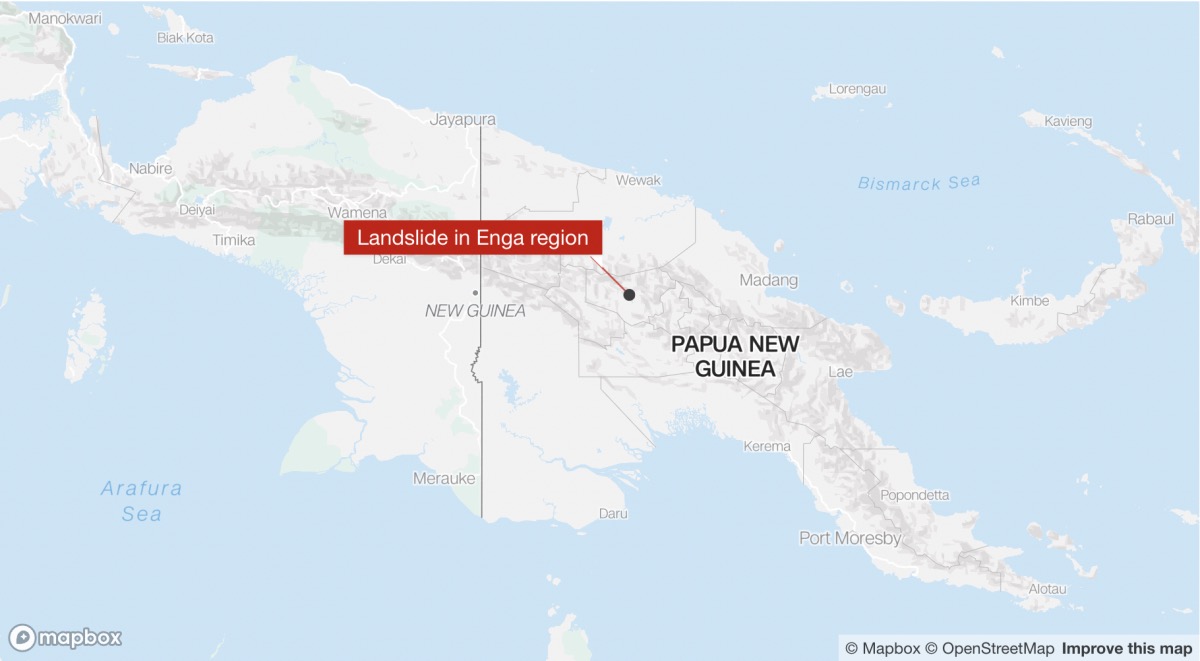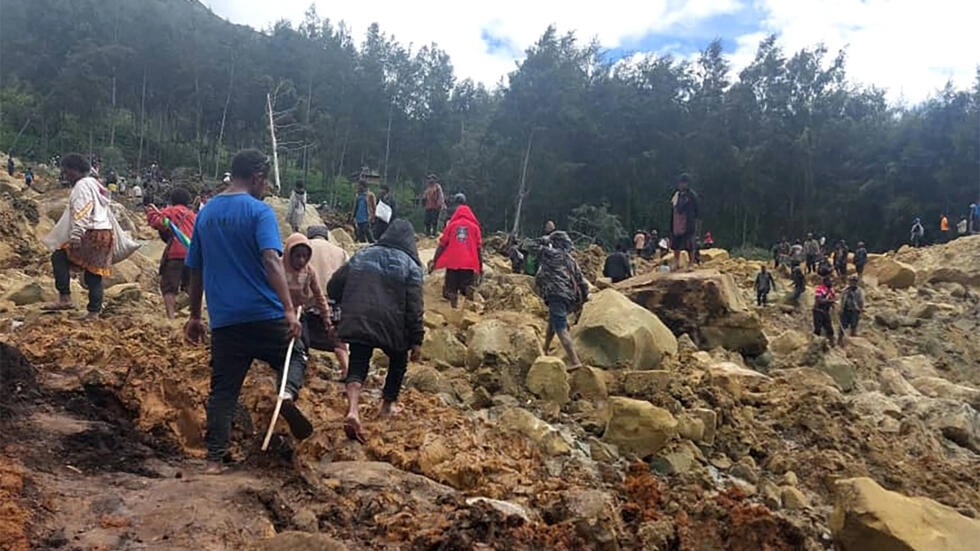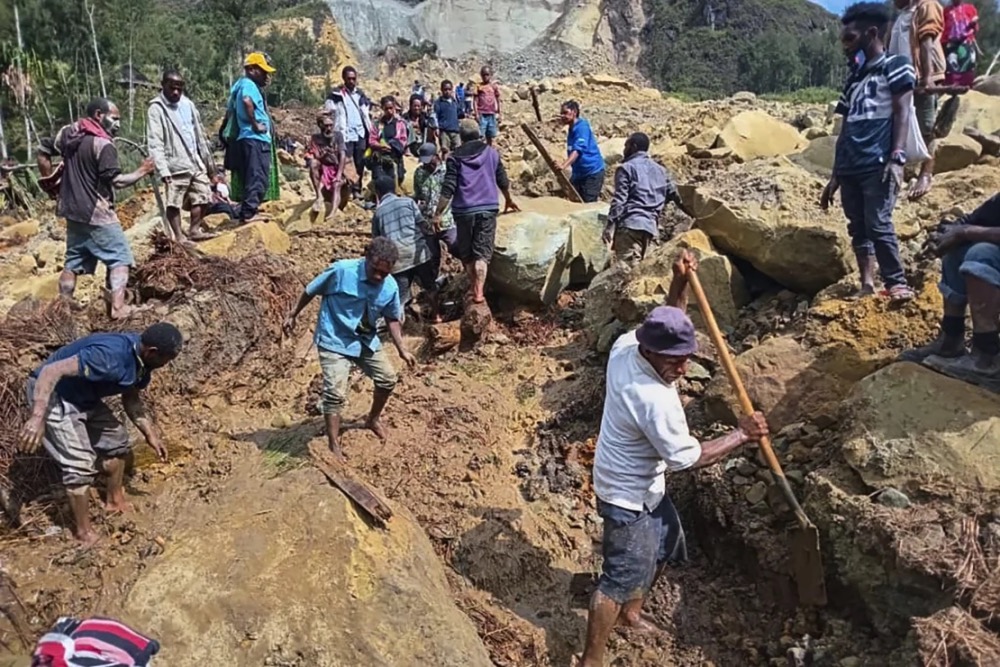ENGA, Papua New Guinea — As many as 2,000 people are feared to have been buried by a massive landslide that struck the mountainous Enga region in northern Papua New Guinea last Friday, May 24, 2024.
The devastating event has left survivors recounting the horror of losing so many loved ones, according to the country’s National Disaster Centre.
The landslide occurred while many locals were asleep, and the latest missing figure marks a sharp increase from earlier estimates.
The remote location and challenging terrain have hampered rescue efforts, leaving residents to dig through the collapsed mountainside with whatever tools they have at hand.
Evit Kambu, a survivor, shared her tragic experience with Reuters: “I have 18 of my family members buried under the debris and soil that I am standing on and a lot more family members in the village I cannot count. I am the landowner here… but I cannot retrieve the bodies so I am standing here helplessly.”
Locals like Kambu are grappling with the immediate aftermath of the disaster, with community leaders expressing their sorrow and the difficulty of the rescue operations.

“People are gathering and mourning,” said Miok Michael, a local community leader, to CNN. “People have been digging since day one but can’t locate bodies as they are covered by huge rocks. Only machines will do.”
The initial reports by the United Nations suggested that up to 100 people may have died, which was later revised to 670 by the International Organization for Migration (IOM). However, the National Disaster Centre’s latest projection indicates a far graver situation.
“The landslide buried more than 2,000 people alive and caused major destruction to buildings, food gardens and caused major impact on the economic lifeline of the country,” Lusete Laso Mana, Acting Director of the National Disaster Centre, stated in a letter to the UN. Mana added that the situation remains unstable, with the landslide continuing to shift slowly, posing ongoing danger to both rescue teams and survivors.
The main highway to the area has been completely blocked by the landslide.

Satellite imagery shows the extent of the devastation, with humanitarian workers describing the landslide’s impact as equivalent to four football pitches.
Officials said on Sunday that the landslide buried more than 150 houses in Yambali village under debris, and the area continues to pose an extreme risk.
Chris Jensen, PNG National Director of World Vision, highlighted the challenge faced by rescue workers: “This is a landslide of massive proportion. It’s quite astonishing – a whole mountain literally fell on so many households during the middle of the night.” He added that the response needs to be cautious to avoid further complications.
Justine McMahon, PNG Country Director for CARE International, noted that the full death toll remains unknown, as only a few bodies have been recovered.
“The authorities have been very effective and very responsive and are working around the clock… but I think given the scale of this disaster and the number of people affected, there will be resources needed from the wider aid community,” McMahon told CNN. She added that the ground remains unstable, making rescue efforts particularly hazardous.
Serhan Aktoprak from the IOM described the desperate measures being taken by locals: “Teams on the ground are trying to rescue whatever they can by using digging sticks, spades, agricultural forks, and their hands.”
The landslide hit the remote village of Kaokalam, about 600 kilometers (372 miles) northwest of the capital Port Moresby, at approximately 3 a.m. local time on Friday, leaving a scar of debris that has challenged rescue operations.
Geology experts have indicated that the landslide may have been triggered by a combination of factors, including considerable rainfall in the region.

Alan Collins, a geology professor at the University of Adelaide, explained that while there were no reports of an earthquake at the time, frequent earthquakes in the region build steep slopes and high mountains that can become very unstable.
He also mentioned that deforestation could have exacerbated the situation by weakening the natural stability provided by tree roots.
As Papua New Guinea continues to grapple with the aftermath of the landslide, the scale of the disaster has highlighted the urgent need for coordinated rescue and relief efforts, as well as a deeper understanding of the underlying causes to prevent future tragedies.







